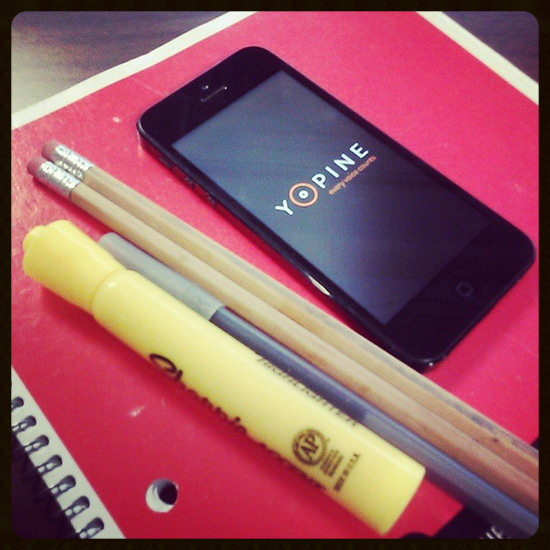By Andrew Board, Yopine Marketing
The extraordinary advancements in media technologies that have been made over the past century have lead to an ever-changing worldwide media climate. These advancements, coupled with the skyrocketing popularity of sports in America and elsewhere, have lead to a complete transformation of sports media in the U.S. and beyond.
Today, fans don’t get all of their sports news from game stories and box scores in newspapers. Instead they are surrounded by media that can bring them news, columns, live score updates, and even live streams of games at all times. These changes have allowed fans to follow sporting events 24/7. This sports media explosion has lead to huge increases in the amount of money being pumped into the sports industry.
24 hour sports television programming is a huge part of the sports media landscape. With more airtime than games to show, these networks, such as ESPN, FOXSPORTS1, and others, have to fill time with highlight shows, pregame shows, and debate talk shows. Much of the programming on these stations is now centered around fan feedback and interaction. ESPN2’s First Take is an example of such a show, featuring prominent sports writers Stephen A. Smith and Skip Bayless who debate each other on the hot sports topics of the day. Shows such as First Take are continuing to grow in popularity, driving programming in non-game hours for 24-hour sports networks.
Sports fans can now access stories, score alerts, and other things instantly on mobile apps. Apps such as Bleacher Report TeamStream allow fans to keep up with their favorite teams seamlessly. TeamStream specifically allows fans to follow a news stream for any professional or college team they wish that keeps them up to date on any news, scores, and updates on the team. These apps, especially TeamStream, also feature comment and debate sections, allowing the fans to voice their opinions.
Along with apps that provide updates, fans can now stream live games to their computers and mobile devices. Cable companies such as ESPN, NBC Sports, and FOX Sports offer streaming of live game content through web browsers and mobile apps. The MLB, NFL, and NBA all provide streaming subscription services that allow fans to stream every game on any device. This increased availability of live game content is probably the single most important thing when it comes to the future of sports media and entertainment media as a whole. If fans can access their sports through a streaming device, and their favorite shows through Netflix, Hulu, HBONow, etc., cable television may become expendable.
The question now is: where does Yopine fit into all of this? The answer is that Yopine could play a key roll in sports media, which now craves instant fan interaction, especially with second screen. With regards to the 24-hour sports networks, Yopine could be a very useful tool for second screen viewer engagement. For example, Yopine could be a great partner and tool for First Take, allowing for the live TV audience to engage in the debates of the show by answering live polls. These polls could be structured to have fans to pick which analyst they agree with after a segment of the show, allowing the fans to connect with the actual on air personalities. This second screen viewer engagement would be very valuable to a program that is trying to keep users from changing the channel during commercial breaks, and therefore keep their advertising rates at their desired level. On top of that, the polls themselves are a sponsorship opportunity for a program.
Yopine could be a great tool for different sports apps, as well. Yopine could partner with Bleacher Report and provide Bleacher Report with a better, more visual way of issuing fan polls and debates both on their website and on their mobile app through the Yopine SDK. Such a partnership would allow Bleacher Report to engage their fans with polls more often, making Bleacher Report more fan-oriented. These fan polls could also be sponsored, along the same lines of Bleacher Report’s sponsorships with the “Coors Light Cold Hard Facts” stream.
Lastly, Yopine could provide polling that occurs live in sequence with live-streamed games. NFL Sunday Ticket or NBA League Pass could partner with Yopine in order to provide live polls in the stream interface in order to increase fan interaction and keep their fans on the stream when a break in action occurs. These polls, once again, would allow for advertising and sponsorship opportunities inside the stream. As sports moves away from television and conventional commercials, any piece of advertising space or signage could be crucial for companies trying to profit off of these streams.
Yopine also has the unique capability to take the pulse of a live crowd. Using the people around me technology in the *crowd platform, teams and broadcasters can take the pulse of the fans in the stadium. This could allow a team to do a simple player of the game poll. For example, the New York Jets could ask the fans in the stadium to vote on the Budweiser Player of the Game. First off, it allows for greater fan interaction with the on the field product. More and more fans are on their smartphones and other devices while at games. This would allow them to still be taking in, for example, a New York Jets product while at a New York Jets game. Also, the advertising and sponsorship opportunities that would come with such polling would be massive. “Budweiser Player of the Game” is just the tip of the iceberg when it comes to sponsorship possibilities that could put money directly into the pockets of the teams.
The *crowd platform could also allow for broadcasters to take the poll of a stadium and share that with the television audience. Fox could ask during a Washington Redskins game “should Robert Griffin III be benched” and then share the stadium response, and possibly even compare to the responses of a similar poll that is put out to the television audience. Once again, the sponsorship possibilities for the networks are tremendous with this type of polling.
Yopine provides services across different platforms that are compatible with current and future sports media. Fans and content producers alike crave more audience interaction, and what better device than Yopine to make that happen?







